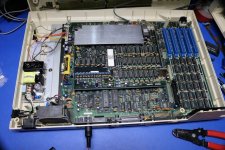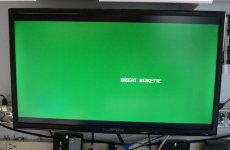smbaker
Experienced Member
I've decided to take on a known-bad Epson QX-10 as a project. I have verified the power supply fuse is not blow, and AC is reaching the power supply board and at least making it past the input filtering. There's no DC produced at the output. Condition of this unit is pristine, not quite unused but really clean. Absent anything else, I'll pull the PSU and start scrutinizing the electrolytics.
I've read there was a Sam's Computerfacts that included a power-supply diagnosis section. It looks like it was available online at some point, I found some dead links leading to dropbox from a site called "yesterbits.com". I don't suppose anyone has a copy, do you?
Thanks,
Scott
I've read there was a Sam's Computerfacts that included a power-supply diagnosis section. It looks like it was available online at some point, I found some dead links leading to dropbox from a site called "yesterbits.com". I don't suppose anyone has a copy, do you?
Thanks,
Scott


